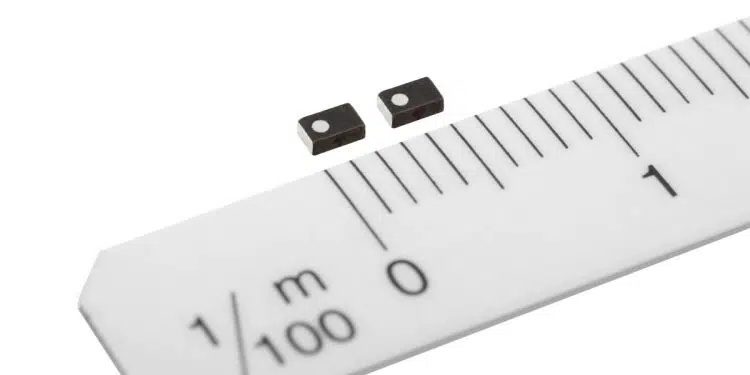TDK offers compact SMD chip inductors with enhanced performance capabilities to address smartphone power circuit demands.
TDK Corporation has developed the new TFM201208BLE series of SMD chip inductors optimized for space-constrained smartphone power circuits. These are available in 0.24, 0.33 and 0.47 µH versions. Mass production will begin in June 2022.
Each supplied in a 2.0 (L) x 1.2 (W) x 0.8mm (H) form factor, the inductors in this latest TDK series feature significantly better electrical properties than the previous TFM201208BLD products – in terms of their inductor current specification and resistance levels. A 10% higher rated current of 5.5 A (Isat), plus a 22% lower DC resistance of 25 mΩ than conventional products have been attained.* These parameters are the best in the industry for inductors of this size.** The major boost in performance has been achieved through TDK’s innovative metallic magnetic material technology and structural design.
SoCs with elevated arithmetic throughput will be required as smartphone performance further progresses, and the accompanying passive components must exhibit higher current characteristics. In addition, integration of ever more functionality into smartphone designs is increasing the number of power circuits involved. Consequently, the inductors employed must have low resistance and contribute minimal losses to extend battery life. The TFM201208BLE series offer the much-needed value to smartphone OEMs delivering the necessary high current and low resistance.
TDK’s overall TFM series also has a wide variety of inductors for automotive applications, including products with 40 V voltage ratings for use in EV powertrains. TDK is constantly expanding its array of products, enabling a wider range of power circuit needs.
Features
- Compared to conventional products (0.33 uH), the rated current has been increased 10 % to 5.5 A, and DC resistance has been reduced by 22 % to 25 mΩ.
- The operating temperature range is from -40 ℃ to +125 ℃.
- A compact and low-profile size of 2.0 (L) x 1.2 (W) x 0.8 (H) mm to facilitate space saving
Applications
- Smartphone
- Tablet
Glossary
- Isat: Current value based on inductance variation (30 % lower than the initial L value)
- SoC: System on a Chip
*Source: Comparison based on 0.33 uH inductor models, **Source: TDK, as of June 2022



































